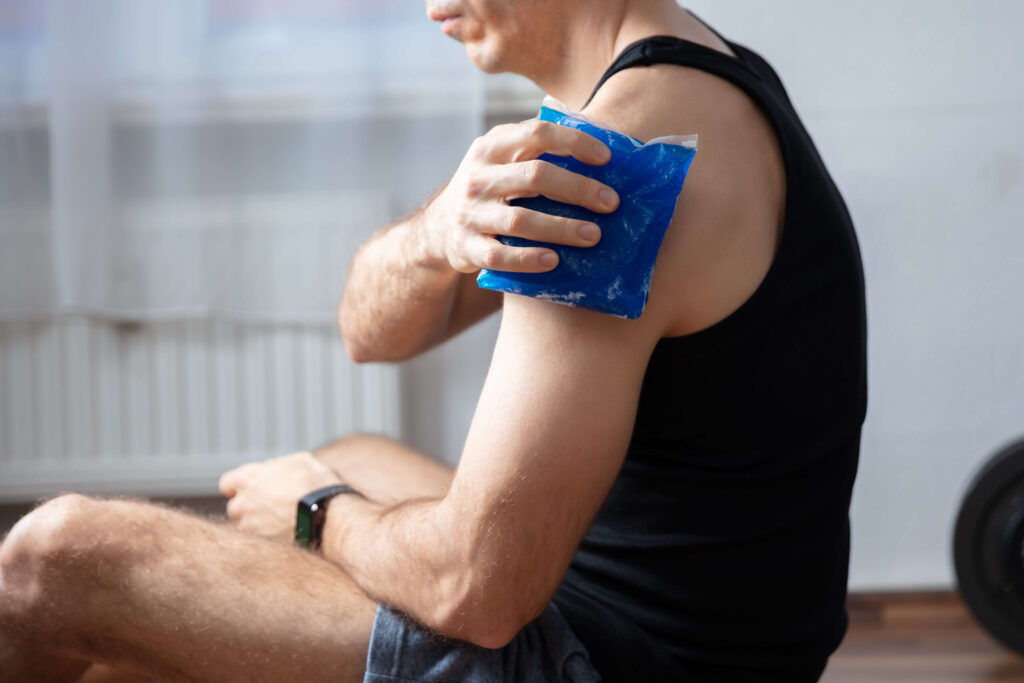Shoulder Impingement. David Wright’s Latest Injury?

Thirty-four year-old NY Mets third baseman David Wright has struggled these last few years, sidelined with a number of injuries and diagnoses. Wright’s latest ailment was reportedly diagnosed as a right shoulder impingement. However, accounts indicate that Wright is seeking a second opinion from orthopedists outside the Mets’ family. The result of this consult is not known as of this writing.
Wright’s most serious issue to date has been spinal stenosis, which can have significant implications for anyone, but particularly so for an athlete. He underwent a cervical discectomy and fusion last June to alleviate pressure on one or more spinal nerves as a result of a disc herniation as well as the stenosis. The fusion would have been performed to restrict mobility in order to limit stresses to the region and prevent instability that might otherwise lead to further nerve compression and irritation. However, stenosis is a narrowing of the spinal canal housing the spinal cord and is something that doesn’t resolve. It can lead to cord compression resulting in weakness, or in extreme cases, paralysis.
The presence of stenosis can also increase the incidence of less severe neurologic symptoms such as stingers, or cause episodes of neuropraxia. The latter is the complete block of nerve transmission though the nerve fibers remain intact. Though both are transient conditions, they are painful, with the latter generally taking a longer time to resolve. Cervical stenosis has ended the career of several football players, primarily due to the frequency and intensity of their symptoms. Interestingly though, sufferers are said by some not to be more at risk of serious spinal injury than their peers. Even when playing football.
David Wright is getting off to a halting start in his comeback from surgery. According to David Waldstein of the New York Times, Mets Manager Sandy Alderson noted that Wright had been experiencing shoulder soreness all spring. He reported that the Mets medical staff believes that resuming throwing after having not done so for so long during his recovery from the neck procedures was the catalyst.
Alderson also reportedly said that Wright had some instability in his right shoulder, which may have predisposed him to impingement. In addition, Mets’ doctors evidently pointed to an incomplete functional recovery of the surrounding musculature as a factor.
CBS reported that due to his prior injuries, Wright had altered his throwing mechanics, adopting more of a sidearm delivery. This too might have been part of what led to his current complaints.
Ed Coleman of WFAN reported that Wright’s throwing program has been suspended for at least two weeks and he was advised to focus on a strengthening program. It remains to be seen if any change to the plan will be effected once the newest diagnostic opinion is in play.
What is clear however, is that Wright is unlikely to be ready for opening day, may not be able to play every day when he does come back, and may have to consider a move to first to limit the need for him to throw longer distances with greater frequency. Wright is reportedly willing to do whatever is asked of him.
So what is impingement syndrome?
The word impingement tells you much of what you need to know – structures are being compressed or pinched. Pain occurs in the upper joint, especially when the arm is elevated and the shoulder rotated inwardly. Overhead and throwing athletes are prime targets. Rotator cuff tendon(s) and a bursa are generally what are impinged in the narrow space formed by the acromion (a portion of bone that appears like a hood over the shoulder), a prominence on the head of the humerus (the bone of the upper arm) and the ligament that connects the clavicle (collar bone) to the shoulder blade at the acromion.
Chronic impingement can lead to wear and tear of the rotator cuff tendons that pass through this (subacromial) space – not a great scenario. If rotator cuff tendons become inflamed, swelling will further compromise the joint space, creating more impingement. Degenerative rotator cuff tears can result in complete rupture and are often associated with biceps tendon rupture as well.
Ignoring symptoms of shoulder pain or soreness while remaining active generally exacerbates the problem. Though an injection can calm the acute inflammation and rest will allow it to do its job, rehab is paramount, and a two-week layoff (as has been suggested) isn’t likely to resolve the underlying causes of the condition.
Weakness of the outward (external) rotators also has an adverse impact on shoulder joint mechanics. Strong outward rotators stabilize and depress the humeral head, keeping it from gliding upward and narrowing the space the tendons and bursa require. Thus weakness can create impingement. So too can a forward head posture and shoulder blade (scapula) that is tilted forward (anteriorly) narrowing the joint space at the shoulder. It becomes a vicious cycle…
Rehab for shoulder impingement always entails working to reduce inflammation while normalizing joint mobility and addressing muscle strength and flexibility. If the rear portion of the joint capsule is tight, restricting internal rotation mobility, joint mobilization proves helpful. The presence of significant instability of the shoulder, generally in the front (anterior) compartment, complicates matters and may require surgery. Likewise, surgical intervention may be necessary if bone spurs or a hooked shaped acromion contribute to impingement. If there is something such as a spur in the way, strengthening alone isn’t likely to resolve symptoms.
